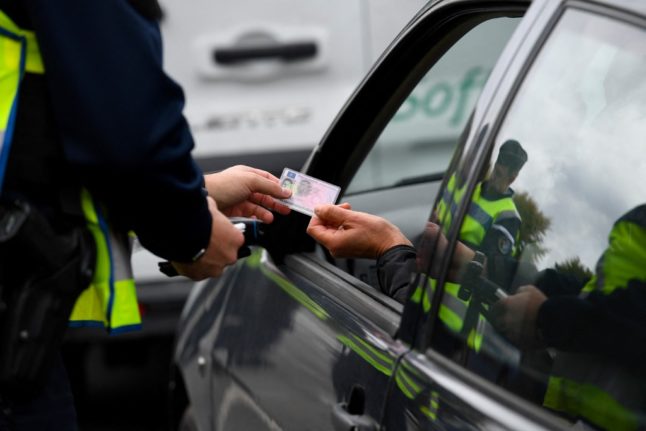Spain’s Interior Ministry confirmed on Tuesday March 14th that the UK-Spain driving licence deal had been approved and that those with UK licences could be back on the road from Thursday March 16th, while they wait to exchange it.
From March 16th 2023 onwards, holders of a valid and current driving licence issued by either Spain or the UK may request to exchange it, depending on their residency, without being subject to any additional requirement such as a practical or theory test.
In order to make the process easier, the provincial traffic headquarters has granted a period of six months, during which British citizens can drive in Spain with their original permit while they undergo the process of exchanging it.
READ ALSO: British embassy hails new UK-Spain driving licence deal
But how exactly do you go about exchanging it?
Firstly, driving licenses for residents in Spain that have been issued in the United Kingdom and Northern Ireland can be exchanged for an equivalent Spanish licence, only when a set of specific requirements has been met. These are:
- The driving license cannot be exchanged if you obtained it in your country of origin while you are already a legal resident in Spain.
- It will also not be exchangeable if you have obtained the permit after signing up as a legal resident in Spain.
- You will still be able to exchange your licence, even if your permit has expired after you entered Spain.
Driving licences issued by the UK and Northern Ireland authorities will be valid for driving in Spain for a period of six months from March 16th.
The British Embassy in Spain has reminded UK residents in Spain that “If you don’t exchange within the six-month window, you won’t be able to drive in Spain anymore using your UK licence, but you will still be able to exchange your licence after that time without taking the Spanish test”.
Step 1: Take your psicotécnico test
The ‘psicotécnico‘ is a medical exam in Spain that tests both your physical and mental abilities to assess whether you can safely carry out certain tasks, such as driving a car. Everyone in Spain needs to get one of these when they renew or get a new licence.
Remember that you must take this test before you make your appointment to exchange your licence. To find out all about what the test entails and where to get it done, click here. You must have taken the test within three months of applying for the exchange. If it is older than this, you will have to take it again.
Step 2: Getting an appointment
The next thing you need to do is get an appointment with a Jefatura or Oficina de Trafico to do the exchange. You can request an appointment online here or by calling 060. If doing it online, you will first select your city from the dropdown menu and then select Trámites de Oficina.
Next, click ‘continuar‘ on the Área: Conductores / Vehículos / Sanciones. This will bring up a page where you will have to fill out all your personal details such as NIE/TIE number, name and e-mail address. Once complete, click on ‘Solicitar’ and this will give you your appointment day and time.
Be aware that because of the number of applicants, it may not be able to get an appointment in all cities right away, but keep trying at different times of the day.
What do I need to take with me to the appointment?
- A completed application form which you can find on the DGT website here, including a declaration to say you have the right to drive motor vehicles and mopeds, haven’t been restricted and that you do not hold another EU or EEA licence of the same class as the one requested or that has been restricted, suspended or annulled.
- ID cards such as your NIE or TIE, residence card, or valid passport. Proof of residence such as your original residence card or certificate of registration in the EU citizen registry and any other document requested by the office where the exchange request is processed.
- Your permit verification code: Before the day of the appointment, you must access the following web pages to obtain your permit verification code. If your permit has been issued by the UK (DVLA), you can find it here. If it was issued in Northern Ireland (DVA), you can find it here.
- The results of your ‘psicotécnico‘ test, issued by an authorised Driver Recognition Centre.
- Proof of payment of having paid the fee. This costs a total of €28,87.
- A current original photograph, measuring 32 x26 mm. It must be in color and with a plain background. The same rules as your passport photo apply such as not wearing dark glasses or a hat.
Remember that while your application for the exchange is being processed, your original permit will be taken away and a provisional permit will be issued to you until the new Spanish one is ready. This will be valid for three months.
How long will it take?
According to the DGT website, it will take approximately a month and a half after your appointment until you are issued your final Spanish licence. You don’t have to worry about making another appointment and going to your nearest office to collect it, it will simply be sent to your home address.
You can check online to see the processing status of your permit.




 Please whitelist us to continue reading.
Please whitelist us to continue reading.
Member comments